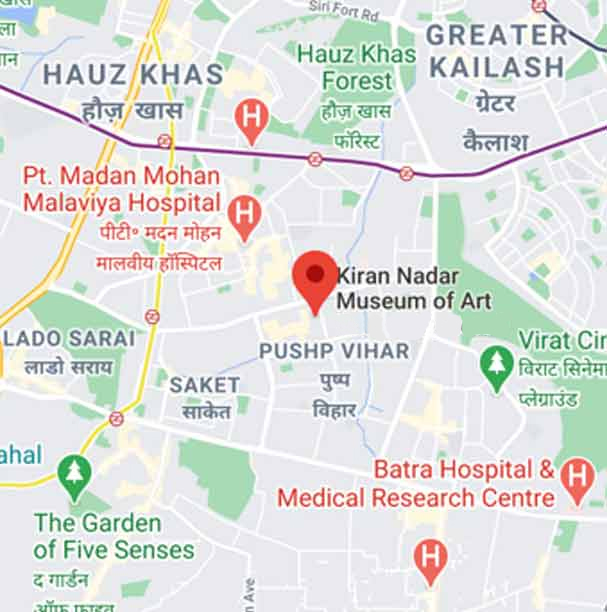- Home
- Museum of the Future by Dr. Andreas Beitin
LECTURES / SYMPOSIUMS
Talks
Museum of the Future by Dr. Andreas Beitin
13 November 2018
KNMA hosted a public lecture by Dr. Andreas Beitin, Director of the Ludwig Forum for International Art, Aachen, followed by a moderated discussion with Latika Gupta, Associate Editor, MARG Publications, as part of the ongoing closed-door conference Museum of the Future (from 13 15 November 2018). The lecture was organized in collaboration with Goethe Institute, New Delhi.
The lecture sketches the development of private art museums in Germany, or the Private Public Partnership (PPP) between private collections and public institutions, on the basis of a few significant examples. Hardly any other country in the world has such a high density of art museums as Germany. Many state or municipally financed museums have either emerged from the collections of aristocratic territorial rulers of the early modern period, or owe their existence to the patronage and passion for collecting of wealthy citizens. Parallel to the meteoric development of the art market from the 1960s onwards, numerous private collections of contemporary art were created in Germany, which after initial collection in a private setting with increasing quantity and quality "ventured" more and more into the public. In 1970, for example, the founding of the Neue Galerie Aachen - Sammlung Ludwig in Aachen was one of the first mergers of a private collector with a municipal institution.
Soon thereafter, the first privately financed museums were founded in the following years, in which the own collection is permanently presented (e.g. 1991 Museum Würth, Künzelsau; 1993 Sammlung Goetz, Munich). Publicly financed museums were also founded whose main task was to show art from private collections (e.g. 1991 Museum Weserburg, Bremen (as the first European so-called collector's museum) or 1999 Museum für Neue Kunst, Karlsruhe). In the southern German federal state of Baden-Württemberg alone, there are currently around 50 private art museums that have a significant influence on the public perception of contemporary art.
Against the background of the development history of private museums and public partnerships, the lecture discussed following questions:
-
How can publicly financed museums with mostly very limited funds and bureaucratic hurdles in public perception stand out from privately financed museums?
-
What are the differences in content between public and private museums and how can these differences be productively presented in favour of public museums?
-
What effects does the increasing number of private art museums have on the "education of taste" of the public?
-
How can the problem of rising prices on the art market be solved in the future so that public museums can also acquire important works of art?
-
What does the shift to global art mean for public museums, and what challenges does it entail?
-
How can the public institutions/financiers of art museums be persuaded to become more committed to this type of cultural institution in the future and thus make a valuable contribution to securing globally significant cultural assets?


